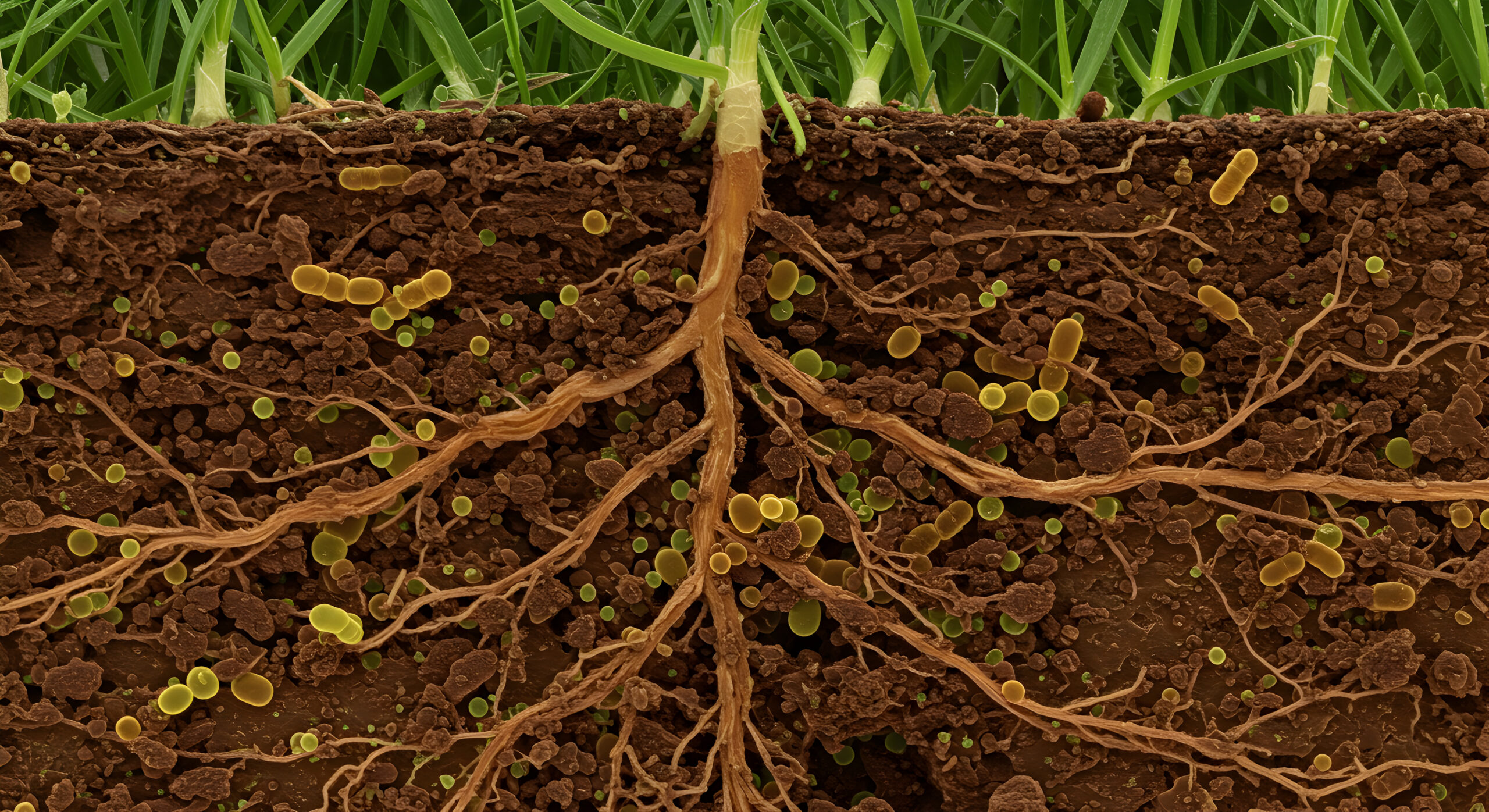There are more microbes in a single handful of soil than all the humans who have ever lived on Earth. When I first heard this, it completely changed how I think about the world beneath my feet. Microbes are these tiny, invisible life forms that are everywhere: in the air, on our skin, in our guts, and in the soil. While many people think of microbes as germs or something that makes you sick, the reality is that many microbes are not only harmless, but essential to life as we know it. Think yogurt, kombucha, sourdough starters, those all rely on beneficial microbes. And when it comes to soil, microbes are the tiny workhorses making plant life (and life on Earth) possible.
What Even Is a Microbe?
A microbe (short for microorganism) is any living thing that’s too small to see with the naked eye. This includes bacteria, archaea, fungi, protozoa, and even viruses. Soil is home to all of these, and often in mind-blowing numbers. In just one gram of healthy soil, there can be billions of microbial cells representing thousands of species. Each group of microbes plays a unique role. Bacteria and archaea are masters of chemical transformations. Fungi (especially mycorrhizal fungi) build relationships with plants and help them access nutrients. Protozoa and nematodes feed on bacteria and release nutrients in plant-available forms. Even viruses can influence which microbes thrive or die, subtly shaping entire ecosystems.
Types of Microbes
- Bacteria: Tiny single-cell organisms that are involved in nutrient cycling and breaking down organic matter.
- Archaea: These single-celled, prokaryotic microbes thrive in extreme environments (like hot springs or salty lakes), but in soil, they help with nutrient cycling and can survive in low-nutrient, oxygen-poor conditions.
- Fungi: Vital in breaking down tough plant material like lignin and cellulose; many also form symbiotic relationships with plant roots, helping them absorb water and nutrients.
- Viruses: Though often seen as harmful, viruses that infect microbes, called bacteriophages, can shape microbial communities and influence the flow of carbon and nutrients in soil ecosystems.
- Protozoa: Single-celled organisms that feed on bacteria, helping control microbial populations and releasing nutrients in plant-available forms during digestion.
- Nematodes: Microscopic worms that prey on bacteria, fungi, and even other nematodes; they help regulate microbial activity and contribute to nutrient cycling.
What are Microbes Doing in the Soil?
Soil microbes are the original recyclers. When a leaf falls to the ground, microbes break it down into simpler components. This process not only clears organic debris but also builds soil organic matter, an essential component of soil fertility and structure. Microbes also cycle nutrients like nitrogen, phosphorus, and sulfur. Some bacteria can “fix” atmospheric nitrogen, converting it into a form plants can use. Others break down complex organic compounds into simpler nutrients that feed the plants growing above them. Without these tiny chemists, plants would struggle to grow, and agriculture as we know it wouldn’t exist.
Soil Microbes and the Climate: A Hidden Connection
It might surprise you, but microbes also play a huge role in regulating Earth’s climate. As they break down organic material, microbes either store carbon in the soil or release it into the atmosphere as carbon dioxide or methane, depending on the conditions. Healthy, well-managed soils can act as carbon sinks, storing more carbon than they release. This process, called soil carbon sequestration, is one of our best nature-based strategies for mitigating climate change. But disturb the soil too much through overgrazing, tillage, or erosion, and we risk flipping that balance. The microbes then release more greenhouse gases than they store, contributing to climate warming.
The Takeaway
Soil microbes may be tiny, but their impacts are massive. They build soil, support plant life, feed our food systems, and help regulate the planet’s climate. They’re not just fascinating, they’re critical for all life. So next time you step outside, take a moment to appreciate the invisible ecosystem under your feet. A handful of soil isn’t just dirt, it’s a bustling microbial metropolis with the power to shape our world.

